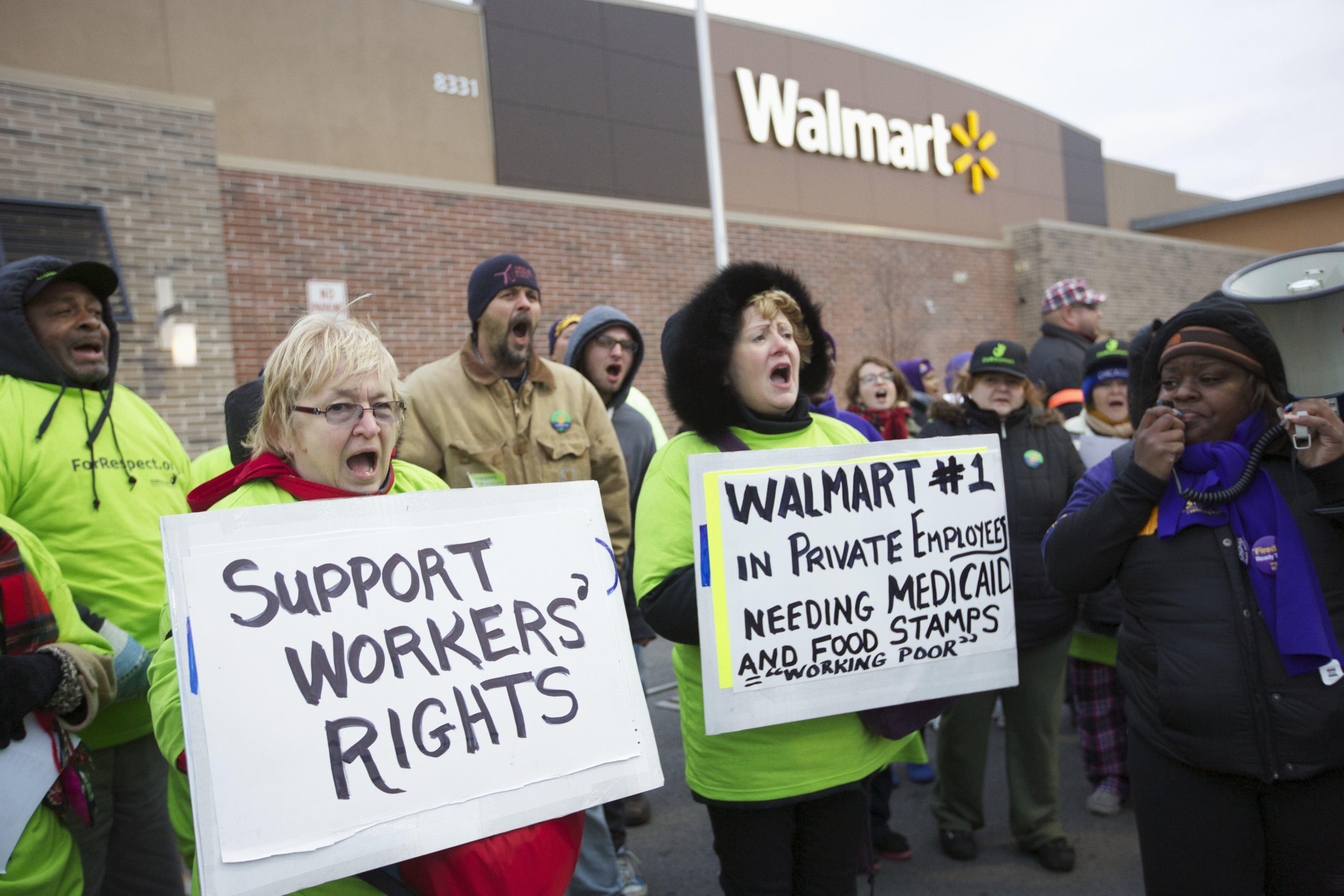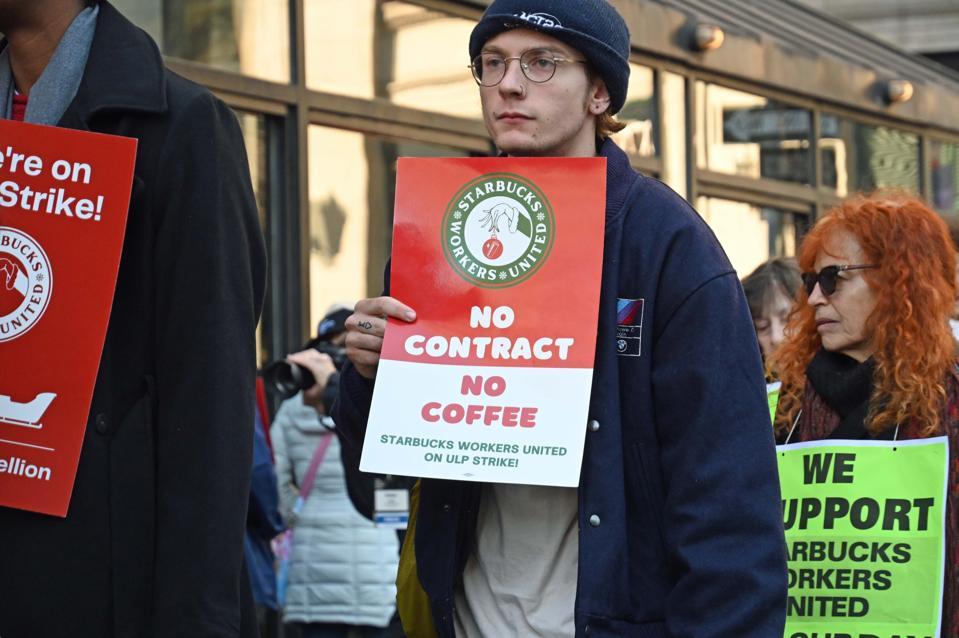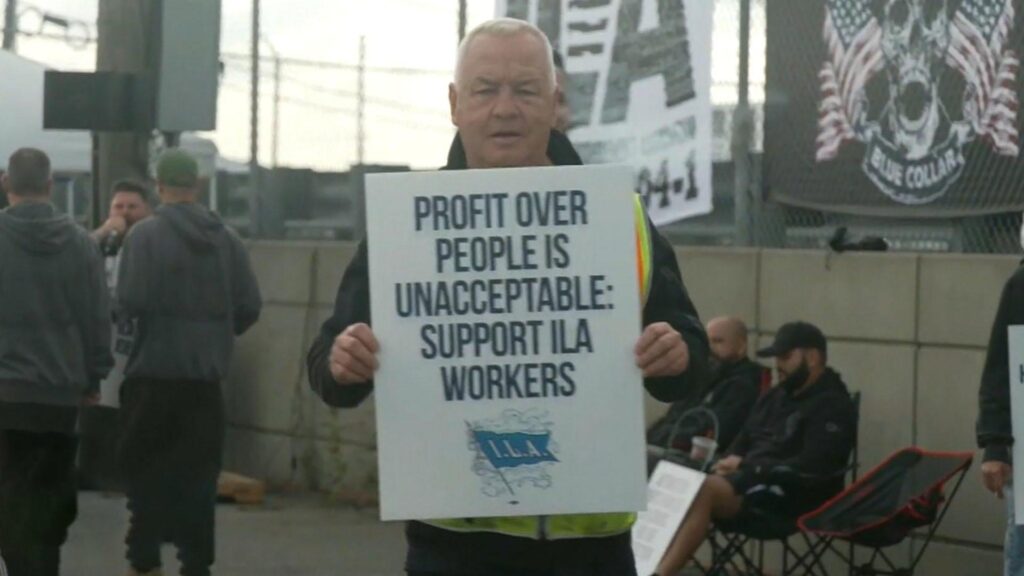When the steady hum of retail floors suddenly falls silent, the ripple effects stretch far beyond the shopfronts. Recent waves of retail worker strikes are not just disrupting sales-they’re compelling the entire logistics landscape to pause, rethink, and innovate. As picket lines grow and shelves remain bare, supply chains face unprecedented challenges, prompting businesses to explore new strategies that could reshape how goods move from warehouse to customer. This article delves into the evolving dynamics sparked by labor unrest in retail, uncovering how strikes are driving a fundamental rethink in logistics management.
Table of Contents
- Retail Worker Strikes Shake Up Traditional Supply Chains
- Understanding the Root Causes Behind the Labor Unrest
- Adapting Warehouse Operations to Minimize Disruptions
- Innovative Technologies Reshaping Logistics Strategies
- Building Resilient Partnerships for Future Workforce Challenges
- Frequently Asked Questions
- Future Outlook
Retail Worker Strikes Shake Up Traditional Supply Chains
Recent labor actions by retail workers have sent shockwaves through the logistics and supply chain industries, compelling companies to rethink their traditional distribution models. As strikes disrupt the usual flow of goods, businesses are scrambling to implement alternative strategies that maintain inventory levels without relying heavily on frontline retail staff.
One significant shift has been the accelerated adoption of automated warehousing technologies and contactless delivery systems. These innovations not only reduce dependency on manual labor but also enhance efficiency and safety in uncertain times. Companies are investing in:
- Robotic sorting and packing systems
- AI-driven demand forecasting tools
- Third-party logistics partnerships
- Expanded e-commerce fulfillment centers
To illustrate the impact of these strikes on supply chain timelines, consider the following simplified comparison of average delivery times pre- and post-strike:
| Phase | Avg. Delivery Time (Days) | Change (%) |
|---|---|---|
| Order Processing | 2 | +50% |
| Warehouse Handling | 3 | +33% |
| Last Mile Delivery | 5 | +25% |
Facing these challenges, many retailers are also exploring more flexible workforce models and cross-training programs to build resilience against future disruptions. This period of upheaval is not only a test of existing logistics frameworks but a catalyst pushing the entire retail ecosystem toward innovation and agility.
Understanding the Root Causes Behind the Labor Unrest
At the heart of recent labor disruptions lies a complex web of longstanding grievances that retail workers have voiced for years. Wage stagnation remains a critical concern, with many employees struggling to keep pace with rising living costs despite companies reporting record profits. This economic disparity has fueled frustration and a growing demand for compensation that reflects both their contributions and the realities of the current market.
Beyond pay, working conditions play a pivotal role in escalating tensions. Retail environments often require long hours with minimal breaks, unpredictable schedules, and the physical toll of constant movement and customer interaction. These stressors, combined with insufficient support from management, have led many workers to feel undervalued and overlooked, sparking calls for better labor protections and humane scheduling practices.
- Lack of job security: Temporary contracts and seasonal layoffs remain widespread, creating insecurity among workers.
- Limited career advancement: Few opportunities for promotion or skill development contribute to low morale.
- Insufficient benefits: Healthcare, paid leave, and retirement plans often fall short of workers’ needs.
| Key Issue | Worker Impact | Employer Challenge |
|---|---|---|
| Wage Stagnation | Financial stress, reduced spending power | Balancing budgets with competitive pay |
| Unpredictable Schedules | Work-life imbalance, increased anxiety | Maintaining staffing flexibility |
| Limited Benefits | Health risks, job dissatisfaction | Rising operational costs |
Understanding these root causes is essential for companies aiming to address the unrest constructively. It’s not merely a matter of financial recompense but fostering an environment where workers feel respected, secure, and valued. Only through genuine engagement and systemic change can the cycle of strikes and disruptions be broken, paving the way for a more resilient and efficient retail logistics landscape.

Adapting Warehouse Operations to Minimize Disruptions
Warehouse managers are swiftly embracing innovative strategies to maintain smooth operations amid the turbulence caused by retail worker strikes. From shifting workforce schedules to embracing automation, the focus is on creating a resilient environment that can absorb shocks without compromising on delivery timelines.
Flexibility in staffing has become a cornerstone tactic. Temporary labor pools, cross-training existing employees, and dynamic shift rotations allow warehouses to respond rapidly to sudden labor shortages. This adaptive workforce strategy not only fills immediate gaps but also builds a more versatile team capable of handling multiple roles.
Technology integration is another game-changer. Smart inventory management systems and predictive analytics help warehouses anticipate bottlenecks before they escalate. By optimizing stock levels and streamlining picking routes, these tools reduce reliance on manual labor, ensuring consistent throughput even with diminished staff.
- Temporary staffing agencies: Engaged to quickly supplement workforce needs.
- Automated sorting systems: Deployed to reduce manual handling.
- Real-time communication platforms: Used to keep teams aligned and informed.
| Adaptation Strategy | Benefit | Impact |
|---|---|---|
| Cross-training Employees | Increased workforce flexibility | Reduced downtime during strikes |
| Inventory Automation | Enhanced accuracy and speed | Maintained delivery schedules |
| Dynamic Shift Scheduling | Optimized labor utilization | Improved operational resilience |

Innovative Technologies Reshaping Logistics Strategies
In response to recent disruptions caused by retail worker strikes, companies are accelerating the adoption of cutting-edge technologies that promise to transform traditional logistics frameworks. Automated warehouses equipped with AI-driven robotics are stepping up to fill labor gaps, streamlining inventory management and order fulfillment with unprecedented precision and speed. These systems not only reduce dependency on human labor but also optimize space utilization and minimize errors, setting new standards in operational efficiency.
Real-time data analytics have become indispensable in navigating the complexities introduced by unpredictable workforce availability. Advanced platforms now integrate predictive algorithms and dynamic routing to continuously recalibrate supply chain flows, ensuring timely deliveries even amid strikes. This agility empowers logistics managers to make well-informed decisions on the fly, balancing costs and customer satisfaction more effectively than ever before.
- Drone and autonomous vehicle deliveries: Expanding beyond warehouses, these innovations address last-mile challenges by bypassing traditional bottlenecks.
- Blockchain-based tracking: Enhances transparency and trust across multiple stakeholders, crucial during volatile labor conditions.
- Collaborative robots (cobots): Designed to work alongside human workers, they mitigate disruptions when workforce numbers fluctuate.
| Technology | Key Benefit | Impact on Strike Resilience |
|---|---|---|
| AI Robotics | Automates repetitive tasks | Maintains operation despite labor shortages |
| Predictive Analytics | Forecasts demand and supply shifts | Enables proactive resource allocation |
| Autonomous Delivery | Reduces last-mile delivery delays | Ensures customer satisfaction during disruptions |

Building Resilient Partnerships for Future Workforce Challenges
In the face of recent retail worker strikes, businesses are compelled to rethink their logistics strategies to withstand future disruptions. Resilience in partnerships has never been more critical as companies seek to build supply chains that can absorb shocks without collapsing. This means fostering relationships with suppliers and labor organizations that emphasize transparency, flexibility, and mutual benefit.
Forward-thinking organizations are investing in collaborative frameworks that encourage open communication and joint problem-solving. These partnerships often include:
- Shared risk management plans
- Flexible workforce agreements
- Technology-enabled real-time data sharing
- Cross-training programs to enhance labor adaptability
Such initiatives not only mitigate the impact of labor disputes but also create a foundation for innovation in workforce management. Companies embracing this approach report faster recovery times and improved employee satisfaction, which are essential for long-term stability.
| Partnership Element | Key Benefit | Example |
|---|---|---|
| Risk Sharing | Reduced financial impact | Joint contingency funds |
| Flexible Agreements | Improved labor responsiveness | Temporary shift swaps |
| Data Transparency | Faster decision-making | Real-time inventory dashboards |
Frequently Asked Questions
Q&A: Retail Worker Strikes Force Logistics Rethink
Q1: What sparked the recent wave of retail worker strikes?
A1: The strikes were primarily driven by demands for better wages, improved working conditions, and greater job security amid rising inflation and increasing workloads. Workers across various retail chains united to voice their concerns and push for meaningful change.
Q2: How have these strikes impacted retail logistics?
A2: The strikes have caused significant disruptions in supply chains, leading to delays in shipments, inventory shortages, and unpredictable store restocking schedules. Retailers have had to urgently reassess and adapt their logistics strategies to maintain operations.
Q3: What logistical challenges have retailers faced during the strikes?
A3: Key challenges include labor shortages in warehouses and distribution centers, bottlenecks in last-mile delivery, and the need to reroute shipments or find alternative transportation methods. The unpredictability of strike duration also complicates planning and forecasting.
Q4: How are retailers rethinking their logistics in response?
A4: Many are exploring automation and robotics to reduce dependence on human labor, diversifying supplier bases to avoid bottlenecks, increasing inventory buffers, and investing in flexible delivery networks. Some are also enhancing communication with workers to better anticipate and mitigate strike impacts.
Q5: Are these logistics changes temporary or long-term?
A5: While some measures address immediate disruptions, the strikes have accelerated long-term shifts toward more resilient and adaptable supply chains. Retailers are recognizing the need for sustainable strategies that can withstand labor unrest and evolving market demands.
Q6: What does this mean for consumers?
A6: In the short term, consumers may experience product shortages, delayed deliveries, and fluctuating prices. However, the logistics innovations spurred by these disruptions could ultimately lead to more reliable service and product availability in the future.
Q7: Could these strikes influence labor relations beyond retail?
A7: Yes, the visibility and impact of retail strikes may embolden workers in other sectors to advocate for better conditions, prompting broader shifts in labor-management dynamics and potentially reshaping supply chain practices across industries.
Q8: What lessons can logistics professionals learn from this situation?
A8: Flexibility, proactive risk management, and strong worker engagement emerge as crucial factors. Building diversified, technology-enabled supply chains that can quickly adapt to labor challenges is essential for maintaining continuity in an increasingly complex retail environment.
Future Outlook
As retail worker strikes continue to reshape the industry landscape, the ripple effects are prompting a fundamental rethink of logistics strategies. Companies are no longer simply responding to disruptions-they are anticipating them, weaving resilience and flexibility into the very fabric of their supply chains. While the road ahead may be uncertain, this period of upheaval also presents an opportunity: to build systems that are not only more efficient but more equitable, ensuring that the backbone of retail-the workers-are recognized and respected in every link of the chain. In this evolving narrative, logistics is not just about moving goods; it’s about moving forward together.

